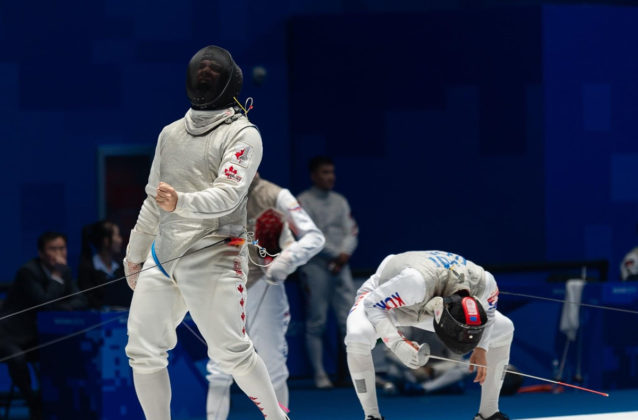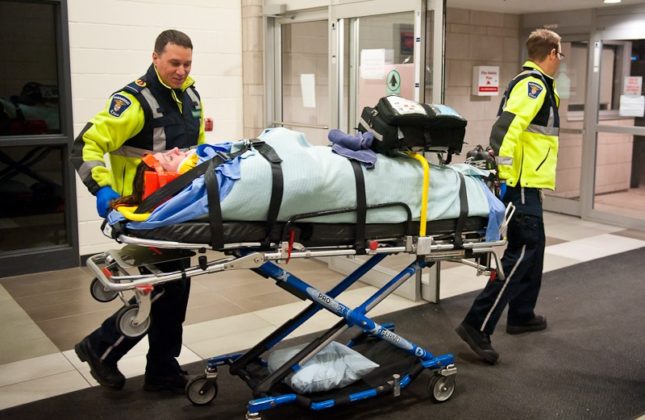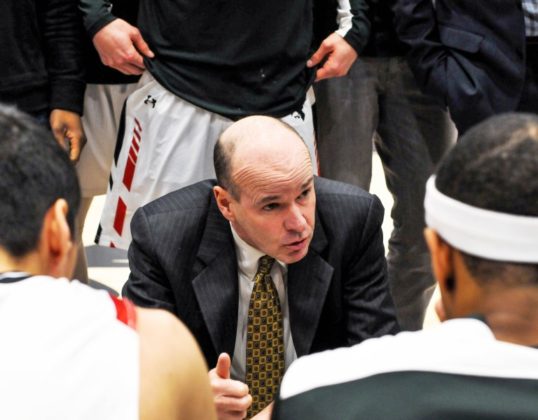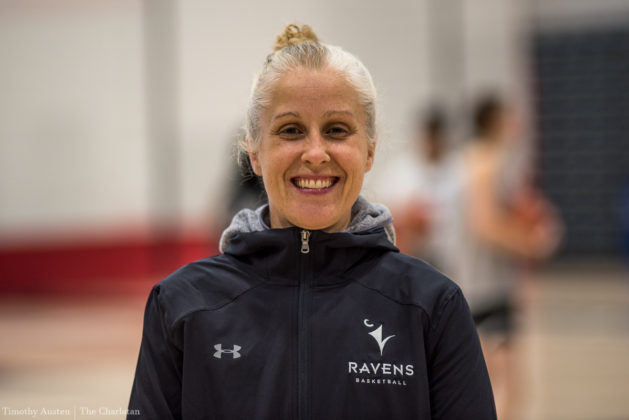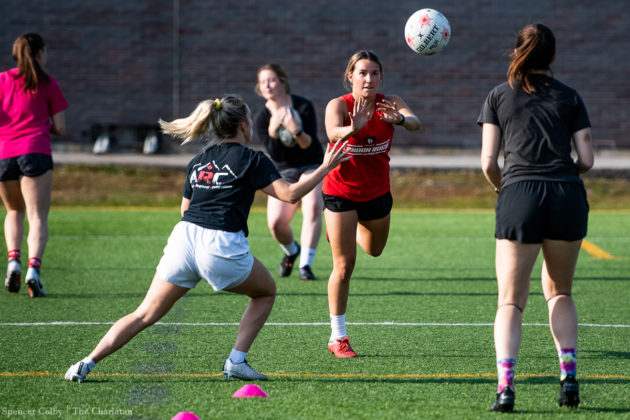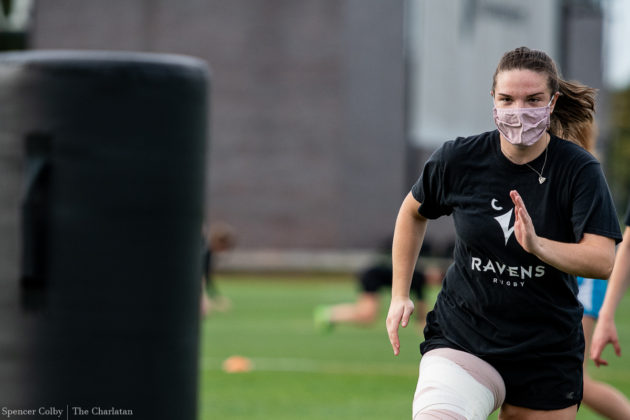On a steep green trail slick with a summer’s fill of baked mud and moss, Phil McCully sprinted down the face of Mount Washington in Vancouver Island, B.C.
Weaving and slipping past ferns and pines, McCully said his teenage zeal pushed his body too far.
McCully lost his footing and tumbled down the mountain, severely tearing several tendons in his ankle and dislocating his wrist. He was out of fencing for three months.
Three years later at 19, he was sparring during the summer offseason before his championship run in the 2014 Ontario University Association’s fencing circuit for Carleton University.
McCully lost his step and landed awkwardly, tearing his MCL and meniscus that prop up his knee. The injuries ripped him away from competitive fencing for twice the time.
This time his injury was a result of overuse—caused by repeated trauma of joints or muscles during training.
With McCully being unable to do everyday activities, the six-month recovery had him doubting whether he wanted to keep competing.
“Some things that should’ve been easy for me were 6,000 times harder because I couldn’t move my knee,” McCully said. “Normally [when uninjured] you take very dynamic movement-orientated fencing lessons, but at some points, I was just sitting in a chair.”
McCully’s experience is all too common for young elite athletes.
Athletes like McCully who train extensively on one sport from a young age, rather than playing a variety of sports, are 81 per cent more susceptible to overuse injuries than those who do, according to a 2019 report by the American Academy of Paediatrics.
The question debated by athletes and experts alike is whether coaches and athletes should move away from early sports specialization, especially when it puts young athletes like McCully at a higher risk for serious injury.
The value of balance
As a teenager, McCully spent between 20 to 30 hours a week practising, which he said dictated much of his daily life.
“We have to visualize a triangle where it’s sleep, school, and fencing … and you can pick two of them,” McCully said.
Some experts claim there is a better way to train athletes that is less extreme.
Matthew Sorley, a Carleton University sports psychology professor, said young athletes should be encouraged to be “athletic generalists.”
A term coined by David Epstein in his book, Range, ‘athletic generalist’ refers to the act of engaging in numerous competitive sports until an athlete is deemed ready to specialize by turning professional.
An athletic generalist style of development produced one of the most exciting NFL prospects in sports today: this year’s Super Bowl champion Patrick Mahomes. The quarterback learned many of his unprecedented throws from pitching in high school baseball throughout his football development.
After declining to play for the MLB’s Detroit Tigers in 2014 to play football at Texas Tech University, it wasn’t until Mahomes’ junior year that he specialized in football, according to a 2020 Washington Post article.
Mahomes remains an outlier in the world of elite sport. Division 1 football players and golfers train an average of 45 and 41 hours a week respectively in deliberate practice for their sport, according to a 2017 NCAA study.
However, deliberate practice in one sport has been shown to explain only one per cent of the variance in athletic performance between elite level athletes, according to a 2016 study by Perspectives on Psychological Science.
“This finding is inconsistent with the claim that deliberate practice accounts for performance differences even among elite performers,” the study reads. “This finding challenges the notion that higher skill performers tend to start in a sport at a younger age than lower skill performers.”
These statistics suggest McCully’s experience of overtraining is the norm. The average hours 11- to 17-year-olds spend on practising a single sport is 23 hours per week, according to a 2017 Orthopaedic Journal of Sports Medicine survey of 201 parents.
Physical and mental tolls
At times, McCully said the physical toll of up to 30 hours a week of training was devastating.
“You don’t have a whole lot of time for much else other than school and sports,” McCully said.
Tony Carbonette, owner of Capital Athletic Therapy and Rehab Centre in Ottawa, has been shepherding athletes through injuries for over 20 years.
According to Carbonette, the biggest battle when trying to diversify athletes is often a mental one.
“If you get someone that’s tied in their identity to being an athlete and when you take that away from them because they’re hurt … I mean … I’ve seen athletes go into a depression,” he said.
McCully said the support he received from his coach while recovering from his injury kept him pushing forward.
“I probably wouldn’t have been able to motivate myself to do that, but my coach really helped me,” McCully said. “Every week he would say, ‘It’s getting a little bit better, a little bit better. I can see it getting better,’ then I’d be able to say, ‘OK, it’s working.’”
Athletic influences
Sorley and Carbonette agreed the biggest influences on a developing athlete’s life are their coaches and their parents. If any systematic change were to happen to how athletes develop, it would start with them.
Ben Etheve-Meek, an expert tennis coach for over 25 years, said he agrees diversification is essential for athletes.
Etheve-Meek said the first things he looks for in developing an athlete is their heart, their passion, and their drive to win, which he believes are essential for an athlete’s success.
For him, these human qualities blossom for athletes who play a variety of sports like he did.
“I think it’s harmful if you don’t do it that way,” he said. “You would be hard-pressed to go somewhere for whatever sport, identify those kids who are very, very good, and find one who didn’t play many sports when they were younger.”
He added training without purpose can be worse than not training at all.
“You have to put in the hard work, but the hard work has to be smart,” he said. “I would take half an hour of quality work over three hours of raw, physical, brute force kind of work.”
Though coaches like Etheve-Meek are slowly starting to turn the wheel on kids being athletic generalists, Sorley said the bigger proponents of single-sport practice are parents.
More than half of the 201 parents surveyed by the Orthopaedic Journal of Sports Medicine in 2017 hoped their children would play collegiately or professionally, and half of the parents encouraged their children to specialize in a single sport.
Seventy-two per cent of participants also stated their children “had experienced a sports-related injury.”
Fortunately for McCully, parental pressure was never a concern, though he said his parents were always very involved throughout his development.
“My dad would travel with me every weekend, spending countless thousands of dollars getting me to tournaments,” McCully said. “Taking time off of work to fly me places until I was old enough to do it all myself.”
Developing next-generation athletes
In addition to being an athletic therapist, Carbonette is also a high-performance coach for a hockey team of 14-year-olds. He said the first step for developing future athletes should be ending overtraining, the idea of pushing an athlete past the edge of their physical limitations.
“Go play video games on Friday night. Give your physical body a rest,” he said.
Carbonette said some parents don’t let their kids make that decision. Instead, they push their child to be dedicated to practising at the expense of other interests.
In the future, McCully said he has his sights on competing for the Canadian national fencing team to see how high he can finish in the sport. In the meantime, he and his co-coach Patrick Fournier will be developing five future fencers in Ottawa.
Although McCully didn’t label himself as an athletic generalist, he did emphasize the value in participating in different activities. He credits his longtime coach Parviz Haghandish with that lesson.
Before every practice, McCully said his coach Haghandish would have him play a round of chess before fencing the other kids, which heightened his mental skills.
“Fencing is a lot more mental than it might look,” McCully said. “You’re planning five, six steps ahead trying to account for so many different factors and then still have to make a split-second decision.”
According to Sorley, 30 minutes of playing something else, like chess, is better for athletes than 30 extra minutes of practice.
“If you could only pick one approach, knowing everything we know about the skills that are required across different sports, maybe you want to start off by being that generalist,” Sorley said.
Featured image from file.


